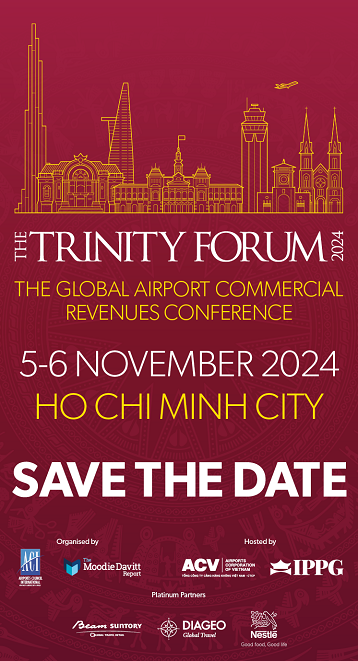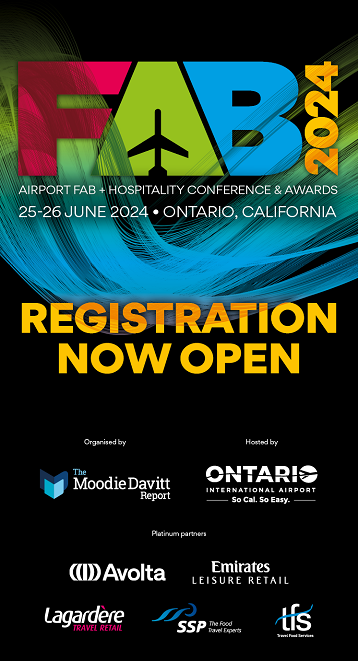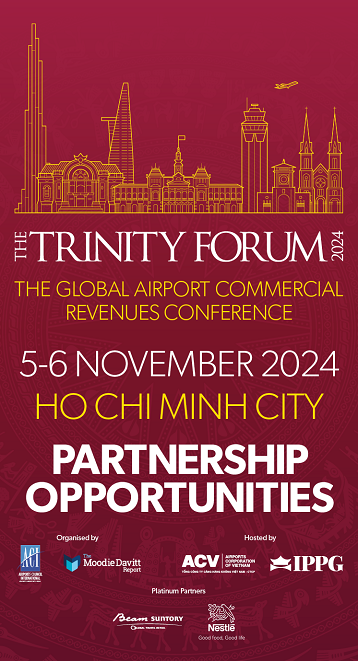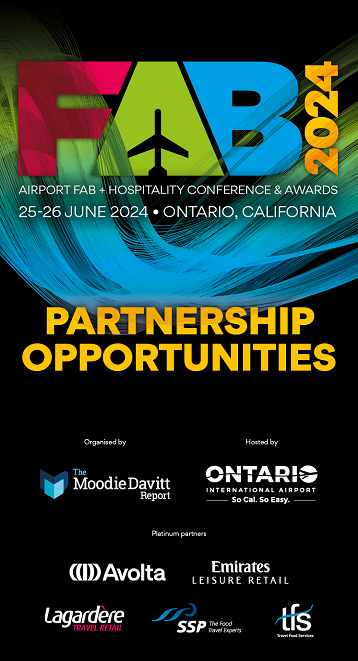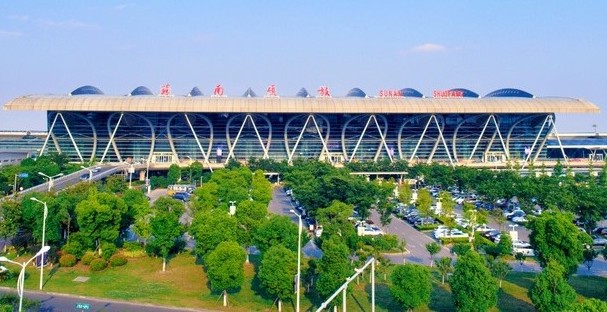ASIA PACIFIC. In one of the highlights of the recent Australian Airports Association (AAA) Retail & Commercial Forum, Collinson President Asia Pacific Todd Handcock offered the global consumer loyalty and traveller experiences leader’s vision for the changing world of travel. The event was co-organised by the AAA, The Moodie Davitt Report and The Mercurius Group.
Handcock said the industry has an opportunity today to better engage the traveller, in particular by overcoming an often fragmented range of services, and ensuring a more connected experience, driven by technology.
“At Collinson we are dedicated in pretty much everything we do around this concept of making the traveller journey more joyful,” he said. “And we know that consumers have heightened expectations of their experiences and of an integrated offering at the airport.

“We all realise it, but how do we actually deal with it? To offer an integrated customer experience, really we have got to get the industry stakeholders working closer together, and the data and insights coming together. Everyone here is sitting on data in its various forms, but we’re still not bringing those pieces of data together to unlock great insights.
“The challenge is that apart from a few airports like Changi or Beijing Daxing, which have started to invest in integrated systems, in general, the global airport industry experience remains fragmented.”

To assess how consumers view the travel experience today, Collinson’s Airport Dimensions division recently ran research with over 6,000 respondents in ten markets around the world.
It asked a key question: “How do you feel about the airport you depart from most often?” Most airports fared quite well in the findings, with up to 30% of people selecting the highest rating, namely that the airport is an enjoyable part of the journey.
But even this figure points to an opportunity for further improvement.

In some markets, leading airports have invested in creating an interconnected traveller experience, driven by technology and the leveraging of data – but more airports still sit at a lower range in terms of engagement and satisfaction.
The key point, noted Handcock, is that consumers are conditioned by their day to day lives to have integrated, seamless experiences using technology. “I don’t want to walk into an airport with my mobile phone and use my wallet for one thing, use my Priority Pass app for another thing, use the airport app for another thing or the airline app for something else. I want an integrated, seamless experience.”

On a positive note, a high number (93%) of travellers (see above) said they were open to a relationship with the airport. Yet 26% say they have no interaction; only 16% are members of an airport loyalty programme; and just 14% say they are in regular dialogue with an airport.
He said: “So there is a real opportunity for airports and others in the travel space to directly connect with willing travellers who are open to a relationship. And airports can be a lynchpin in that eco-system.”
One of those opportunities lies in attracting pre-booking of services before travel. A high proportion of travellers are open to engage earlier in the journey. Crucially this is especially true of Gen Z and Millennials.
Handcock said: “We see a strong adoption of digitally booked services among these generations. And they have a very positive engagement correlation across everything from airport transfers and parking, to spas and lounges, even retail purchases.”
He added: “More needs to be done to encourage key services to be booked and sold in advance and enable brands in the travel ecosystem to work together across the end-to-end journey.”

In the survey, Collinson also asked which incentives would encourage travellers to spend more in the airport?
So called ‘hard incentives’ such as credit card offers and frequent flyer miles remained strong (see chart above). So too was the ability to compare airport prices with off-airport retail prices to gauge value and the ability to view real-time offers and promotions. More consumers wanted delivery of goods as an option.
“Convenience is coming to bear as a factor for consumers. When they get off the plane they don’t necessarily want to carry the bottle through security. They may not want to have it in the overhead if they can have an option where that can be delivered.”

Building on the findings, several trends are clear, said Handcock. “First, the digital journey has arrived. But most airports are tracking behind this trend.
“The airport of the future must be digital and must be inter-connected. The opportunity is there for airports to have a relationship with travellers. Let’s think about the future message. You don’t have to use our airport app. But if you don’t use it, the queues will be longer, the experience won’t be as seamless and the opportunity to unlock benefits won’t be as strong.
“Now that is all based on the willingness of consumers to share data. Consumers are much more up on what the value of their data means. They recognise that it is all about fair value exchange. And that is a fair value exchange, not through your eyes, but through the eyes of the consumer. If you achieve that you can engage them one to two months in advance, and also after their trip.”
He cited the example of Singapore Changi as an airport striving to take this ‘big picture’ approach. Its Changi Rewards enables consumers to search for, review and book services before, during and post-travel. They are rewarded for spend on dining, shopping and parking. There is a focus on gamification and rewards long after they have returned home too.
Another example of bringing the airport ecosystem together is Adelaide Airport’s ‘Order Now’ marketplace solution, powered by Servy, in which Collinson is a key investor. Technology enables food and drinks from airport outlets to be ordered online in advance and collected at travellers’ preferred time. In addition, a new table order and payment solution is being rolled out across lounges and at restaurants with Delaware North as partner.

Another key trend Collinson has identified is the new retail and revenue landscape.
“There is a new ability to sell across the journey today building on digital,” said Handcock. “The acceleration of ecommerce has happened and we need to catch up.
“Consumers are going into retail outlets, they are looking at, touching and feeling, then they’re scanning a code and ordering for delivery somewhere else.
“This has implications for our industry. From a retailer perspective, even from an airport perspective, the cost of capital and the stock that sits in the warehouse at the airport is lower. You are not lowering your revenues but you are matching the engagement desires of your consumers. If you want to compete with Apple, you have to do things the way they do them. The reality is that airports are behind on insights-driven engagement. And we are only going to get there if we connect and share data.”

He highlighted the DXB&More service at Dubai International as an example of service deployed around shopping and dining ordering and takeout (also powered by Servy).
“Looking at our global customer base, we are increasingly seeing airports make significant investments in creating a better customer/brand experience.
“We see it especially in the US recently, where San Francisco, Dallas Forth Worth, JFK, Los Angeles and Seattle all have new terminals with expanded options for customers. They are bringing in celebrity chefs to their restaurants, and turning the airports into destinations that people want to travel through.”

The other trend highlighted by Handcock is the ‘Two-tier airport’. Many consumers, he said, are happy to pay for an enhanced experience.
“There are lots of travellers today that want to go to the airport to get a massage, they want to go to the spa, go to the hairdresser, or have lunch, do some gaming, or go into a sleep pod. That can seem like, but with an inter-connected airport doesn’t have to be, a threat to the retail.
“The other side of this is a global trend towards paid loyalty. I pay for Amazon Prime, I immediately get the benefits of being part of that loyalty programme. It’s the same thing that can be done with airports. How do they potentially have paid-for loyalty, with a range of benefits? Again, Amazon has already primed our customers for that.
“As an example I’m sitting in the lounge and I get served duty free offers through my Inflyter app [in which Collinson is a key investor]. We know who the consumer is and we can serve up relevant offers for them. And all of this helps retailers to increase turnover and boosts ancillary revenue for others in the travel ecosystem.
“I know we are still a long way from that but it is possible, and there are organisations outside our industry that are already starting to do these things. We can also get there.”





